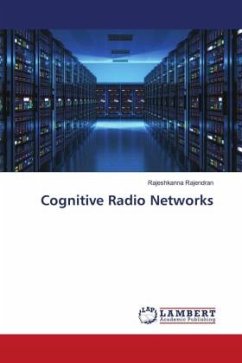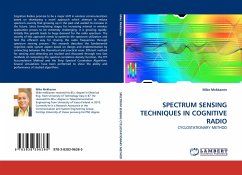
Cognitive Radio Networks
Versandkostenfrei!
Versandfertig in 6-10 Tagen
29,99 €
inkl. MwSt.

PAYBACK Punkte
15 °P sammeln!
Cognitive radio (CR) is a form of wireless communication in which a transceiver can intelligently detect which communication channels are in use and which ones are not. The transceiver then instantly moves into vacant channels, while avoiding occupied ones. These capabilities help optimize the use of the available radio frequency (RF) spectrum.It also minimizes interference to other users. And, by avoiding occupied channels, it increases spectrum efficiency and improves the quality of service (QoS) for users.The wireless RF spectrum is a limited resource, usually allocated through a licensing ...
Cognitive radio (CR) is a form of wireless communication in which a transceiver can intelligently detect which communication channels are in use and which ones are not. The transceiver then instantly moves into vacant channels, while avoiding occupied ones. These capabilities help optimize the use of the available radio frequency (RF) spectrum.It also minimizes interference to other users. And, by avoiding occupied channels, it increases spectrum efficiency and improves the quality of service (QoS) for users.The wireless RF spectrum is a limited resource, usually allocated through a licensing process. In the U.S., it is the joint responsibility of the Federal Communications Commission (FCC) and the National Telecommunications and Information Administration (NTIA). The FCC administers the spectrum for non-federal (e.g., commercial) use, while the NTIA does the same for federal (e.g., military, FBI) use.












